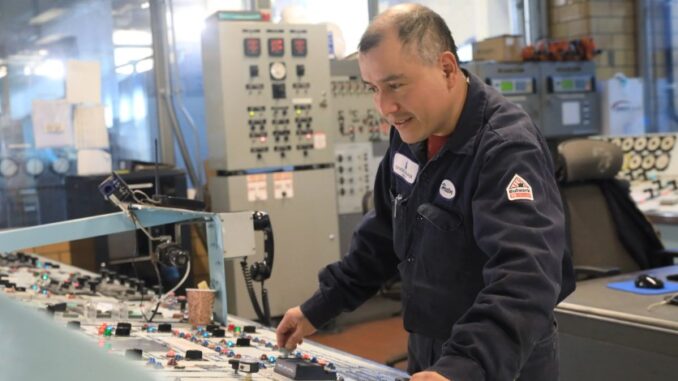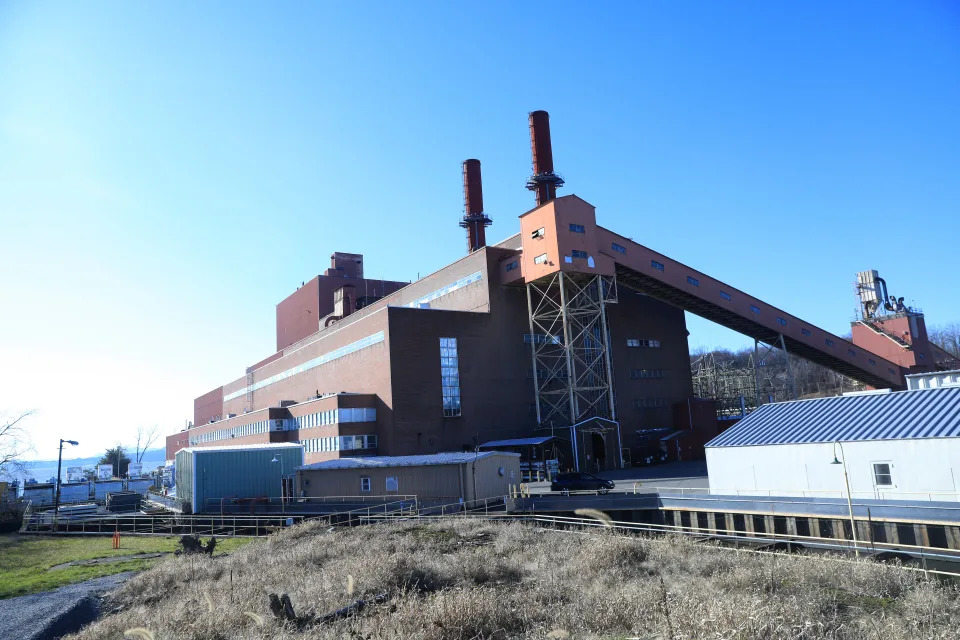
The South Bronx may be stuck with the New York Power Authority’s peaker plants and the dangerous emissions they release for years to come.
But elsewhere, New York has been making it tougher for these natural gas plants to fire up when demand for energy is high.
In 2019, the state adopted the Peaker Rule, named for the fossil-fuel generation plants that kick in during the hottest months of summer when air conditioners run around the clock.
The regulation required peakers to adopt stringent pollution controls by 2023 and 2025. Those that couldn’t retrofit their plants to comply with lower allowable emissions rates were forced to retire. To date, the state Department of Environmental Conservation says, some 37 plants have plans to retire, many after 50 years of operation.
That totals about one gigawatt of fossil fuel generation, enough to power 750,000 homes and the equivalent of 3.1 million solar panels.
The seven NYPA peakers located in the Bronx, Brooklyn, Queens and Long Island were spared, largely because they were built in 2000, at a time when cleaner emissions standards were in place.
Offshore wind breezes
Others will soon be converted to green-energy hubs.
At the Ravenswood Generating Station in Long Island City, 16 of its 17 peakers have been shut down. The seven acres on which they once sat will be used to connect renewable energy from offshore wind generated off the coast of Long Island.
CEO Clint Plummer acknowledged the transition will take several years as the state moves to a grid that relies largely on renewable energy.
“New York City is one of the densest populated places on Earth, certainly in the United States, and is a grid that is more dependent on fossil fuels than just about any other part of the country,” Plummer said. “And so we’re trying to undertake a very dramatic transformation very quickly. Our view is that units like Ravenswood will be a critical part of that transition.”
Reliability margins will get tighter, requiring a delicate balance between retiring fossil fuel plants while the state tries to achieve climate goals of 70% reliance on renewables by 2030.

Central to the success of that green-energy push are two of the largest transmission projects the state has undertaken in 50 years.
The $6 billion Champlain Hudson Power Express will bring solar, wind and hydroelectric power from upstate and Canada to Queens along 340 miles of transmission cable, much of it submerged in the Hudson River.
And the Clean Path New York Project will deliver renewable power to Astoria by way of 174 miles of transmission cable that will begin in Delaware County.
Should those projects not be ready by 2030 as promised, the grid could be jeopardized, particularly during stretches of heat in the 90s, according to the New York Independent System Operator, which oversees the state’s energy grid.
“Some generation affected by the DEC’s Peaker Rule may need to remain in service until CHPE or other permanent solutions are completed to maintain a reliable grid,” the NYISO report said in April.

Danskammer in the crosshairs
The DEC has been getting aggressive with other peaker owners, forcing one in Astoria to close and clouding the future of another.
In October 2021, EPA denied an air permit request for the Danskammer Energy Center in Newburgh, claiming a renewal would interfere with the state’s greenhouse gas emission limits and that the company failed to show the plant would be needed to power the grid.
The company, in a statement, says it is still considering its “path forward” following the denial.
In the months preceding the decision, hundreds turned out for public hearings — one ran for more than nine hours — on the issue, and, with a push from Food & Water Watch, some 9,000 comments in opposition were delivered to the DEC.
The plant is still churning out fossil-fuel-generated energy, and its output, like the NYPA peakers, has steadily been bumped up in recent years, along with increasing amounts of CO2 and nitrogen oxide emissions, according to EPA data.

The plant’s defenders say the state’s move was short-sighted. The permit denial prevented the company from upgrading its emissions controls during a time when its energy will be needed anyway.
“You’re gonna be left with these peaker sites that have tried to become more efficient, burn less fuel, pollute less, and be there for reliability, but because of, in my judgment, politics, they’re not allowed to repower,” said Gavin Donohue, who heads the Independent Power Producers of New York (IPPNY). “So, to me, it’s just poor public policy.”
Upstate: NY created an agency to OK wind and solar projects quickly. Upstate towns aren’t happy
At an IPPNY convention in the fall, DEC commissioner Basil Seggos was asked how the state planned to “bridge” the gap until renewable power comes online.
“Listen, I don’t think there is a plan B, alright,” Seggos said. “And I mean that seriously about our opportunity right now, I don’t think we have a plan B. I think that we are on the edge right now when it comes to global climate change and emissions, I really firmly believe that. So we have one shot to get this right. That’s what makes this so challenging.”
His answer frustrated industry officials.

Labor groups fought the state’s decision to deny a permit for a peaker plant in Astoria run by NRG Energy, which shut down this month.
If the state had allowed NRG to continue operating while emission upgrades were made, hundreds of workers — plumbers, pipefitters and welders among them — could have continued working for three years, said John Murphy, the industry representative for the United Association, which includes several union trades. Instead, many have been forced to look for work in other states.
Murphy called it “bad energy policy” and compared it to the decision to shut down the Indian Point nuclear power plant in Buchanan two years ago.
Radiation: Indian Point shutdown was supposed to quiet anti-nuclear critics. Not a chance
Fines: Indian Point owner could face fines if it dumps radioactive water into Hudson
“So clean energy went offline with Indian Point, we forced the demand into the dirty fossil fuel peakers and we won’t allow the upgrades because of the CLCPA (Climate Leadership and Community Protection Act,” Murphy said.
“They’re (the peakers) an easy target,” added James Shillitto, president of the Utility Workers Union of America Local 1-2. “You know, it’s like Indian Point, it was more of a political target. … Think about clean energy. Nuclear is zero emissions. And that plant ran for 50 years. But OK, it’s done, I’m not gonna cry about that anymore.”

Shillitto said the state should have kept peakers like Danskammer and NRG around for a few more years while the renewable build-out advanced.
“I’m not trying to say it’s good for the environment to burn the gas turbines, but it’s better than the alternative of possibly no power at times,” Shillitto said. “With the New York City ordinance to go all-electric, it’s putting huge pressure on the distribution and transmission systems.”
This article originally appeared on New York State Team: New York green energy push force some power plants’ retirements



